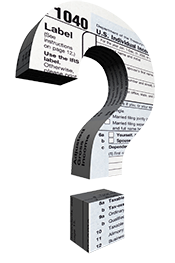 Home-based businesses can be financially rewarding and provide a certain amount of flexibility with your day-to-day schedule. Here are some tips to keep your business running at full steam.
Home-based businesses can be financially rewarding and provide a certain amount of flexibility with your day-to-day schedule. Here are some tips to keep your business running at full steam.
- Stay on top of accounts receivable. It’s easy to get caught up with fulfilling your business obligations while invoices you’ve sent out go unpaid. Agree to payment terms in advance with new customers and immediately – but politely – communicate with them as soon as they miss a payment deadline. Keep current with regular invoicing and collections.
- Keep your bookkeeping records up-to-date. You may not realize you have an unpaid invoice that’s several months old unless your bookkeeping is up-to-date. Keeping accurate books involves more than balancing your bank accounts once a month. In addition to your monitoring your bank accounts, also consistently look at your accounts receivable, accounts payable, any debts (credit card, car loans or other borrowings), and all money you invest in your business. Ask for help if you don’t have enough time to do the bookkeeping yourself, or if you need help properly setting up your bookkeeping software.
- Check on permit requirements. Depending on what type of home-based business you have, you may be required to obtain various permits, licenses or other registrations. If you have not already done so, check with your town or city for local requirements. The Small Business Administration is also a good source to research information on permits.
- Get insured. Obtain adequate insurance for the type of operation you’ll be running. Besides the insurance required for business activities, you might consider adding a rider to your homeowner’s policy for liability protection should an accident occur on your property.
- Stay on top of technology. While you may not need a top of the line computer, be sure that the technology equipment you use can handle the bandwidth of everything you’ll ask it to do, including video calls, software apps and data storage. Also consider scheduling a time for your internet provider to visit your home to make sure everything is in working order and your security protocols are top notch. Have a back-up plan in place for when a device breaks down, including where you’ll go to have it repaired.
- Cash in on tax breaks. Take advantage of the tax breaks available to home-based businesses, including deductions for supplies, equipment and vehicle expenses. You may even be able to deduct the cost of your home office, including a pro-rated amount of your real estate taxes and utilities, if certain conditions are met.
- Set aside money to pay your taxes. Ask for help to calculate how much of your incoming cash you should be setting aside to pay your federal, state and local taxes. Consider opening a separate bank account to transfer your tax money into.
There are always moves you can make to reduce your taxable income. Some of these tax-saving moves, however, must be completed by December 31. Here are several to consider:
- Tax loss harvesting. If you own stock in a taxable account that is not in a tax-deferred retirement plan, you can sell your underperforming stocks by December 31 and use these losses to reduce any taxable capital gains. If your net capital losses exceed your gains, you can even net up to $3,000 against other income such as wages. Losses over $3,000 can be used in future years. Just be sure you do not repurchase the same stock within 30 days, or the loss will be deferred.
- Take a peek at your estimated 2022 income. If you have appreciated assets that you plan on selling in the near future, estimate your 2022 taxable income and compare it to your 2021 taxable income. If your 2022 income looks like it may be significantly higher than 2021, you may be able to sell your appreciated assets in 2021 to take advantage of a lower tax rate. The opposite also holds true. If your estimated 2022 taxable income looks like it may be significantly lower than your 2021 taxable income, lower tax rates may apply if you wait to sell your assets in 2022.
 Max out pre-tax retirement savings. The deadline to contribute to a 401(k) plan and be able to reduce your taxable income on your 2021 tax return is December 31. See if you can earmark a little more money from each of your paychecks through the end of the year to transfer into your retirement savings accounts. For 2021, you can contribute up to $19,500 to a 401(k), plus another $6,500 if you’re age 50 or older. Even better, you have until April 18, 2022, to contribute to a traditional IRA and be able to reduce your taxable income on your 2021 tax return.
Max out pre-tax retirement savings. The deadline to contribute to a 401(k) plan and be able to reduce your taxable income on your 2021 tax return is December 31. See if you can earmark a little more money from each of your paychecks through the end of the year to transfer into your retirement savings accounts. For 2021, you can contribute up to $19,500 to a 401(k), plus another $6,500 if you’re age 50 or older. Even better, you have until April 18, 2022, to contribute to a traditional IRA and be able to reduce your taxable income on your 2021 tax return.- Make cash charitable contributions. If you’re like 90% of all taxpayers, you get no tax benefit from charitable contributions because you don’t itemize your personal deductions. On your 2021 tax return, however, you may contribute up to $300 in cash to a qualified charity and deduct the amount whether or not you itemize your deductions. Married taxpayers who file jointly may contribute $600. You can make your contribution by check, credit card, or debit card. Remember that this above-the-line deduction is for cash contributions only. It does not apply to non-cash contributions.
- Bunch deductions so you can itemize. Are your personal deductions near the amount of the standard deduction for 2021: $12,550 for singles, $18,800 for head of household and $25,100 for married filing jointly? If so, consider bunching your personal deductions into 2021 so you can itemize this year. For most, the easiest way is to bunch two years of charitable contributions into a single year. These can include gifts of appreciated stock where you get to deduct the fair market value without paying capital gains tax.
In late 2020, the IRS announced that it will increase tax audits of small businesses by 50 percent in 2021. Here are several mistakes to avoid if you do get audited by Uncle Sam.
- Mistake: Missing income. A long history of investigating has led IRS auditors to focus on under-reported income. If you’re a business that handles cash, expect greater scrutiny from the IRS. The same is true if you generate miscellaneous income that’s reported to the IRS on 1099 forms. Be proactive by tracking and documenting all income from whatever source. Invoices, sales receipts, profit and loss statements, bank records—all can be used to substantiate income amounts.
- Mistake: Higher than normal business losses. Some small businesses struggle in the early years before becoming profitable. If your company’s bottom line never improves, the IRS may view your enterprise as a hobby and subsequently disallow certain deductions. As a general rule, you must earn a profit in three of the past five years to be considered a legitimate business.
 Mistake: Deductions lacking substantiation. Do you really use your home office exclusively for business? Does your company earn only $50,000 a year but claim charitable donations of $10,000? Do you write off auto expenses for your only car? The key to satisfying auditors is having clear and unequivocal documentation. They want source documents such as mileage logs that match the amount claimed on your tax return and clearly show a business purpose. If you can’t locate a specific record, look for alternative ways to support your tax return filings. In some cases, a vendor or landlord might have copies of pertinent records.
Mistake: Deductions lacking substantiation. Do you really use your home office exclusively for business? Does your company earn only $50,000 a year but claim charitable donations of $10,000? Do you write off auto expenses for your only car? The key to satisfying auditors is having clear and unequivocal documentation. They want source documents such as mileage logs that match the amount claimed on your tax return and clearly show a business purpose. If you can’t locate a specific record, look for alternative ways to support your tax return filings. In some cases, a vendor or landlord might have copies of pertinent records.- Mistake: No expense reports. If you use your credit card for business, create an expense report with account numbers and attach it to each statement. Then attach copies of the bills that support the charges. This is an easy place to blend in personal expenses with business expenses and auditors know it.
- Mistake: No separate books, bank accounts or statements. Never run personal expenses through business accounts and vice versa. Have separate bank accounts and credit cards. A sure sign of asking for trouble is not keeping the business separate from personal accounts and activities.
- Mistake: Treat the auditor as an enemy. Auditors have a job to do, and it’s in your best interest to make their task as painless as possible. Try to maintain an attitude of professional courtesy. If you’re called to their office, show up on time and dress professionally. If they come to your place of business, instruct staff to answer questions honestly and completely.
Now is the time to begin tax planning for your 2021 return. Here are some ideas:
 Contribute to retirement accounts. Tally up all your 2021 contributions to retirement accounts so far, and estimate how much more you can stash away between now and December 31. So, consider investing in an IRA or increase your contributions to your employer-provided retirement plans. Remember, you can reduce your 2021 taxable income by as much as $19,500 by contributing to a retirement account such as a 401(k). If you’re age 50 or older, you can reduce your taxable income by up to $26,000!
Contribute to retirement accounts. Tally up all your 2021 contributions to retirement accounts so far, and estimate how much more you can stash away between now and December 31. So, consider investing in an IRA or increase your contributions to your employer-provided retirement plans. Remember, you can reduce your 2021 taxable income by as much as $19,500 by contributing to a retirement account such as a 401(k). If you’re age 50 or older, you can reduce your taxable income by up to $26,000!- Contribute directly to a charity. If you don’t have enough qualified expenses in order to itemize your deductions, you can still donate to your favorite charity and cut your tax bill. For 2021, you can reduce your taxable income by up to $300 if you’re single and $600 if you’re married by donating to your favorite charity.
- Consider a donor-advised fund. With a 2021 standard deduction of $12,550 if you’re single and $25,100 if you’re married, you may not be able to claim your charitable donations as a tax deduction if the total of your annual donations is below these dollar amounts. As an alternative, consider donating multiple years-worth of contributions to a donor-advised fund if you have the available cash so you can exceed the standard deduction this year. Then make your cash contributions from the donor-advised fund to your favorite charities over the next three years.
- Increase daycare expenses. If you and/or your spouse work and have children in daycare, or have an adult that you care for, consider using a daycare so you and a spouse can both work. This is because there is a larger tax break in 2021. If you have one qualifying dependent, you can spend up to $8,000 in daycare expenses while cutting your tax bill by $4,000. If you have more than one qualifying dependent, you can spend up to $16,000 in daycare expenses while cutting your tax bill by $8,000. To receive the full tax credit, your adjusted gross income must not exceed $125,000.
- Contribute to an FSA or an HSA. Interested in paying medical and dental expenses with pre-tax dollars? Then read on…If you have a flexible spending account (FSA), you can contribute up to $2,750 in 2021. This allows you to pay for medical expenses in pre-tax dollars! Even better, unspent funds in an FSA can now be rolled from 2021 to 2022. And if you have a health savings account (HSA), you can contribute up to $3,600 if you’re single and $7,200 if you’re married. So, add up all your contributions to your FSA or HSA so far in 2021 and see how much more you can contribute between now and December 31.
 Understanding how our tax system works can be tricky for anyone. Whether you’re an adult who never paid much attention to the taxes being withheld from your paycheck or a kid who just got his or her first job, understanding the basics can help refine and define questions you may have.
Understanding how our tax system works can be tricky for anyone. Whether you’re an adult who never paid much attention to the taxes being withheld from your paycheck or a kid who just got his or her first job, understanding the basics can help refine and define questions you may have.
Many schools don’t teach these tax lessons. This results in many people entering life with a pretty incomplete picture of how taxes work, unless someone else takes the time to explain these tax concepts. Here are some pointers to help you or someone you know navigate our tax maze.
Taxes are mandatory!
While we can have a debate about how much each person should pay, there’s no debating that local, state and federal governments need tax revenue to run the country. These funds are used to build roads, support education, help those who need financial assistance, pay interest on our national debt and defend the country.
There are many types of taxes
When you think of taxes, most think of the income tax, which is a tax on business and personal income you earn from performing a job. But there are also other types of taxes. Here are some of the most common.
- Payroll taxes. While income taxes can be used to pay for pretty much anything the government needs money for, payroll taxes are earmarked to pay for Social Security and Medicare benefits.
- Property taxes. These are taxes levied on property you own. The most common example of this is the property tax on a home or vacation property.
- Sales tax. These are taxes placed on goods and services you purchase. While most of this tax is applied at the state and local levels, there are also federal sales taxes on items like gasoline.
- Capital gains taxes. If you sell an investment or an asset for a profit, you may owe capital gains taxes. The most common example of this is when you sell stock for a gain. Capital gains taxes could also come into play with other assets, such as a rental property you sell for a profit.
- Estate taxes. This tax is applied to assets in your estate after you pass away.
Not all income is subject to tax
Most, but not all, of your income is subject to tax.
- While your paycheck is subject to tax, interest earned from certain municipal bonds is not. And the government often excludes things like benefits from the tax man.
- Capital gains taxes have exclusions for gains on the sale of your home and donated stock.
- Estate taxes have an exclusion, so only estates in excess of the exclusion are taxed.
This is why having someone in the know can be really helpful in navigating these rules.
The progressive nature of income tax
When it comes to income taxes, the government gets to take the first bite. The question is how BIG of a bite the government gets to take.
For example, if you only have one chocolate chip cookie, the government’s bite is really, really small. If you have 1,000 chocolate chip cookies, the government takes a small bite from the first 100 cookies, a larger bite from the next 100 cookies, and an even larger bite from the remaining 800 cookies.
This is called a progressive tax rate system. For example, if you’re considered single for tax purposes in 2021, the first $9,950 of taxable money you earn gets taxed at 10%. The next $30,575 you earn gets taxed at 12%. The next $45,850 gets taxed at 22%. Money you earn above this point will get taxed at either 24%, 32%, 35% or 37%.
Understanding the progressive nature of our tax system is a key concept in managing the size of the bite the government takes. That is why tax planning is so important!
Deductions can decrease the government’s tax bite
The progressive tax system is complex because it is manipulated in a big way by our elected officials. This is typically done through credits, deductions and phaseouts of tax benefits.
For example, there is a fairly complex deduction for families with children, and the earned income tax credit is an added tax cut for those in the lower end of the progressive income tax base. There are also credits and deductions for businesses, homeowners, education and many more types of taxpayers.
As you can imagine, the U.S. tax system is very complex with many nuances. Please seek help if you have further questions or are facing a complicated taxable transaction.
 With the April 15 tax filing deadline right around the corner, here are answers to some common tax questions.
With the April 15 tax filing deadline right around the corner, here are answers to some common tax questions.
- When will I get my refund? The pandemic and additional stimulus payments will, in all probability, delay refund payments. But as of now here are the old wait times to receive your refund.
* E-file return with a direct deposit – 1 to 3 weeks
* E-file return with a mailed check – 1 month
* Paper file return with a direct deposit – 3 weeks
* Paper file return with a mailed check – 2 months
NOTE: If you want exact information on the status of YOUR refund go to www.irs.gov/refund and follow their instructions.
- What’s the most common delay in completing a tax return? Missing items! W-2 and 1099 forms are some of the most common tax documents to go missing. If you have multiple jobs, whether full-time or part-time, you’ll be getting multiple documents in the mail. It’s easy to lose track of all these documents if you don’t have one place you put them once received.
- Can I still get a stimulus payment? If you’re still waiting on either the 2020 or 2021 stimulus payment, file your 2020 tax return and claim the Recovery Rebate Credit. This is why it is important to keep track of any payments you receive from the government during the year. You will need them to account for any missing payments or underpayments.
- Can I correct a tax form that has an incorrect dollar amount? If you receive a tax document with incorrect information, contact the company that issued the document and try to get it fixed immediately. If you can’t get a corrected form right away, include both the incorrect form and the correct dollar amount when turning in your tax documents to have your return prepared.
- Can I deduct charitable contributions if I don’t itemize? In 2020 you can claim a $300 charitable contribution deduction regardless of whether or not you itemize your deductions. If you missed this window of this above-the-line donation in 2020, never fear as it is also available in 2021 with an increased limit to $600 for married couples. So, save those donation receipts!
- Is this taxable? While there are always exceptions, the most common taxable items that are questioned include unemployment benefits and withdrawals from non-Roth retirement accounts. Some things, like Social Security, are often, but not always, taxable.
Here are several new tax laws passed this year to consider as you start planning your 2020 tax obligation.
 Make up to $300 of charitable contributions. For the 2020 tax year only, an above-the-line deduction of $300 is available to all Americans who want to make a charitable contribution. You can donate to more than one charity, but the total amount of contributions must be $300 or less to be able to take an above-the-line deduction. While you will still need to itemize your deductions if you want a tax break for donations greater than $300, this above-the-line deduction for $300 or less helps alleviate the elimination of the charitable deduction for most taxpayers. (NOTE: $300 is the maximum above-the-line deduction per tax return, regardless of filing status.)
Make up to $300 of charitable contributions. For the 2020 tax year only, an above-the-line deduction of $300 is available to all Americans who want to make a charitable contribution. You can donate to more than one charity, but the total amount of contributions must be $300 or less to be able to take an above-the-line deduction. While you will still need to itemize your deductions if you want a tax break for donations greater than $300, this above-the-line deduction for $300 or less helps alleviate the elimination of the charitable deduction for most taxpayers. (NOTE: $300 is the maximum above-the-line deduction per tax return, regardless of filing status.)
What you need to do. Donate $300 to your favorite charitable organization(s) by December 31, 2020. You must receive a written acknowledgment from the charitable organization(s) to which you made the $300 contribution before filing your 2020 tax return.
- Donate up to 100% of your income. The normal contribution limit of 60% of your income is suspended for 2020, allowing you to contribute as much of your income as you want to various charities.
What you need to do. While only a tax break for a few taxpayers, this initiative is meant to help struggling charities during the pandemic. If you are considering additional giving, you must make your charitable contributions by December 31, 2020. Remember to obtain written acknowledgment from each charity you made a donation to before filing your 2020 tax return.
- Use retirement savings to pay for birth or adoption expenses. Adding a child to your family is very expensive. To help with these costs, you can now cash out up to $5,000 per parent from your retirement accounts to pay for birth and/or adoption expenses. While the withdrawal won’t be hit with the 10% early withdrawal penalty, you’ll still have to pay income taxes.
What you need to do. Consult your financial advisor or benefits coordinator to find out how to withdraw the funds from your retirement accounts. Since this withdrawal will deplete your retirement savings, first consider whether you have other sources of cash to cover expenses.
- No age limit for contributing to IRAs. You can now contribute to an IRA regardless of your age as long as you have earned income. The old rule prevented you from contributing to an IRA past age 70½. The IRA contribution limit for 2020 is $6,000 if you’re under age 50 and $7,000 if you’re over age 50.
What you need to do. Consider getting a part-time job or doing some consulting work if you project that you won’t have earned income by the end of 2020. You can then use this earned income to fund your traditional or Roth IRA.
Ah, summer. The weather is warm, kids are out of school, and it’s time to think about tax saving opportunities! Here are five ways you can enjoy your normal summertime activities and save on taxes:
- Rent out your property tax-free. If you have a cabin, condo, or similar property, consider renting it out for two weeks. The rental income you receive on property rented for less than 15 days per year is not considered taxable income. In addition, you can still deduct your mortgage interest expense and property taxes in full as itemized deductions! Track the rental days closely — going over 14 days means all rent is taxable and rental income rules apply.
- Take a tax credit for summer childcare. For many working parents, the summer comes with the added challenge of finding care for their children. Thankfully, the Child and Dependent Care Credit can cover 20-35 percent of qualified childcare expenses for your children under the age of 13. Eligible types of care include day care, nanny fees and day camps (overnight camps and summer school do not qualify).
- Hire your kids. If you own a business, hire your kids. If you are a sole proprietor and your child is under age 18, you can pay them to work without withholding or paying Social Security and Medicare tax.
- Have a garage sale. In general, the money you make from a yard or garage sale is tax-free because you sell your goods for less than you originally paid for them. Once the sale is over, donate the remaining items to a qualified charity to get a potential charitable donation deduction. Just remember to keep a log of the items you donate and ask for a receipt.

- Start a Roth IRA for your children. Roth IRA contributions are limited to the amount of income your child earns, so earned income is key. This can include income from mowing lawns or selling lemonade. Start making contributions as soon as your child makes some money to take advantage of the tax-free earnings available in a Roth IRA.
Taking the time this summer to execute these tips can put extra money in your pocket right away and provide you tax-saving happiness in the future.
The Tax Cuts and Jobs Act (TCJA) was passed by Congress in a hurry late last year, and the IRS has been working to implement the changes for 2018. Here are the latest answers to some of the most common questions about the tax overhaul:

Is home equity interest still deductible? The short answer is: Not unless you’ve used the money to buy, build or substantially improve your home.
Before the TCJA, homeowners were able to take out a home equity loan and spend it on things other than their residence, such as to pay off credit card debt or to finance large consumer purchases. Under the old tax code, they could deduct interest on up to $100,000 of such home equity debt.
The TCJA effectively writes the concept of home equity indebtedness out of the tax code. Now you can only deduct interest on “acquisition indebtedness,” meaning a loan used to buy, build or substantially improve a residence. If you took out a home equity loan pre-2018 and used it for any other purpose, interest on it is no longer deductible.
I’m a small business owner. How do I use the new 20 percent qualified business expense deduction? Short answer: It’s complicated and you should get help.
Certain small businesses structured as sole proprietors, S corporations and partnerships can deduct up to 20 percent of their qualified business income. But that percentage can be reduced after your taxable income reaches $157,500 (or $315,000 as a married couple filing jointly).
The amount of the reduction depends partly on the amount of wages paid and property acquired by your business during the year. Another complicating factor is that certain service industries including health, law, consulting, athletics, financial services and accounting are treated differently.
The IRS is expected to issue more clarification on how these rules are applied, such as when your business is a mix of one of those service industries and some other kind of business.
What are the new rules about dependents and caregiving? There are a few things that have changed regarding dependents and caregiving:
Deductions. Standard deductions are nearly doubled to $12,000 for single filers and $24,000 for married joint filers. The code still says dependents can claim a standard deduction limited to the greater of $1,050 or earned income plus $350.
Kiddie Tax. Unearned income of children under age 19 (or 24 for full-time students) above a threshold of $2,100 is now taxed at a special rate for estates and trusts, rather than the parents’ top tax rate.
Family credit. If you have dependents who aren’t children under age 17 (and thus eligible for the Child Tax Credit), you can now claim $500 for each dependent member of your household for whom you provide more than half of their financial support.
Medical expenses. You can deduct medical expenses higher than 7.5 percent of your adjusted gross income as an itemized deduction. You can claim this for medical expenses you pay for a relative even if they aren’t a dependent (i.e. they live outside your household) as long as you provide more than half of their financial support.
Avoid hard-won experience and costly mistakes by taking advantage of these five personal finance tips.

Pay yourself first – Paying yourself first means taking a percentage of everything you earn and saving it. Consider it as important as any other bill you pay each month. This is a fundamental rule of personal finance that when used properly can help build an emergency fund and save you from living paycheck to paycheck.
Calculate compound interest by using the Rule of 72 – You can roughly calculate the number of years compound interest will take to double your money using the Rule of 72. Simply divide 72 by the rate of return to rough out how long it takes to double your money. For example, 10 percent compound interest will double a sum in 7.2 years; 8 percent in nine years. It’s a concept that helps us understand the power of saving and investment.
Avoid debt – Unpaid debt is like compound interest, but in reverse. If left unaddressed, it grows exponentially over time as interest and fees add to the original balance due. The result is that you have to work harder and earn more to pay for the items you purchased. Why not save first, then purchase your dream item? When done this way, the purchase price is limited to what you paid for the item, rather than adding the burden of debt over time.
Understand amortization – When a bank loans you money, it gives you a certain interest rate and a set number of years to pay it back. Each payment you make contains interest as well as a reduction of the amount owed, called principal. Most of the interest payments are front-loaded, while the last few payments are virtually all principal. A smart consumer knows this and tries to make additional interest payments at the beginning of the term. This will dramatically reduce the number of payments required to pay back the loan.
Take advantage of tax deductions, credits and capital gains – Tax laws are complicated and made even more complex when the rules change. There are many tax deductions and credits to take advantage of, as well as strategies to minimize capital gains tax. Why leave money on the table just because you don’t know the rules? Ask for help and ask for it early in the year. The power of getting the right tax plan in place every year is definitely something everyone should know about.